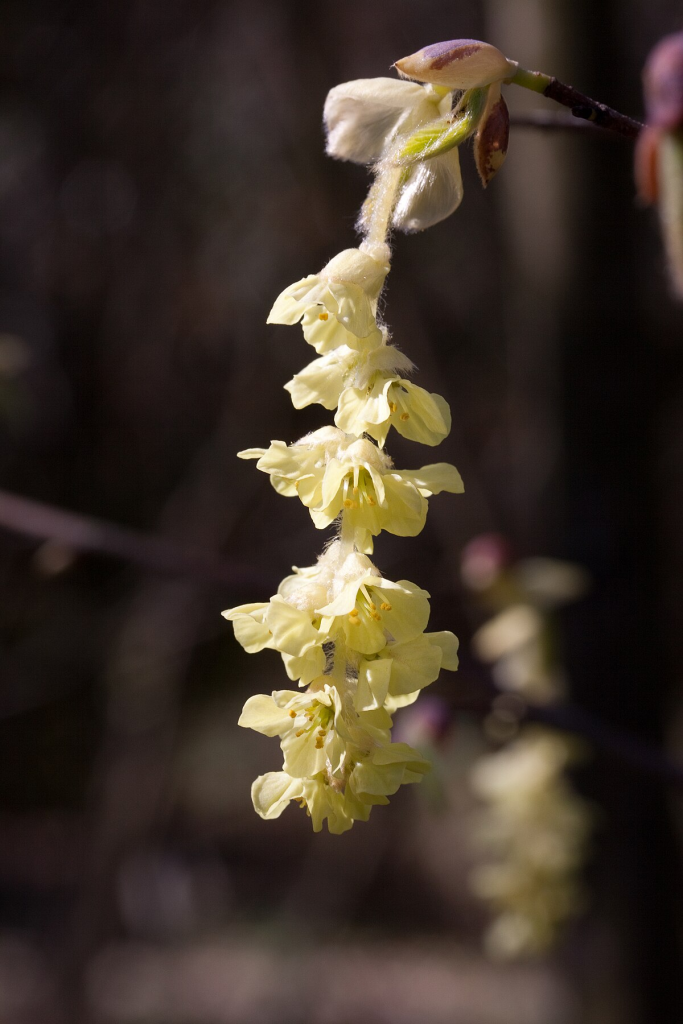
This deciduous shrub or small tree is native to mountainous areas of central China and is a member of the witch hazel family, Hamamelidaceae, that also includes lorpetalum and fothergill. It grows 8-14′ tall and has a bushy habit. The emerging leaves are reddish purple before turning shiny, green on the upper side and blue-green on the lower side with hair along the veins. They are oval to elliptic, 2-4″ long, and have margins with bristle-like teeth. The flowers appear in weeping racemes up to 3″ long on bare branches in early spring. The racemes have up to 15 flowers that fragrant, butter-yellow, and protruding red-brown anthers. The fruit is a 2 valved dry capsule containing 2 glossy black seeds. Veitch’s winter hazel is a good choice for woodland and fragrance gardens. The genus name, Corylopsis, is derived from the Greek words korylos which means hazel and opsis which means like or resemblance and refers to the fact that the leaves are similar to those of hazel plants. The specific epithet, veitchiana, honors Englishman James Veitch (1868-1907), whose family members were distinguished horticulturists and nursery-men for over a century. Photo Credit Denis.prévôt, Wikimedia Commons

Type: Flowering deciduous shrub or small tree
Outstanding Feature: Flowers
Form: Rounded
Growth Rate: Moderate
Bloom: Three inch long drooping racemes of fragrant yellow flowers in early spring
Size: 8-14′ H x 5-8′ W
Light: Partial shade; tolerates some sun
Soil: Fertile, consistently moist, well-drained, acidic
Hardiness: Zones 5-8
Care: Plant in sheltered area to protect from late frosts; prune immediately after flowering if needed
Pests and Diseases: None of significance
Propagation: Layering, seed, stem cuttings
Outstanding Selections: None available
Photo Credit: Wikidata